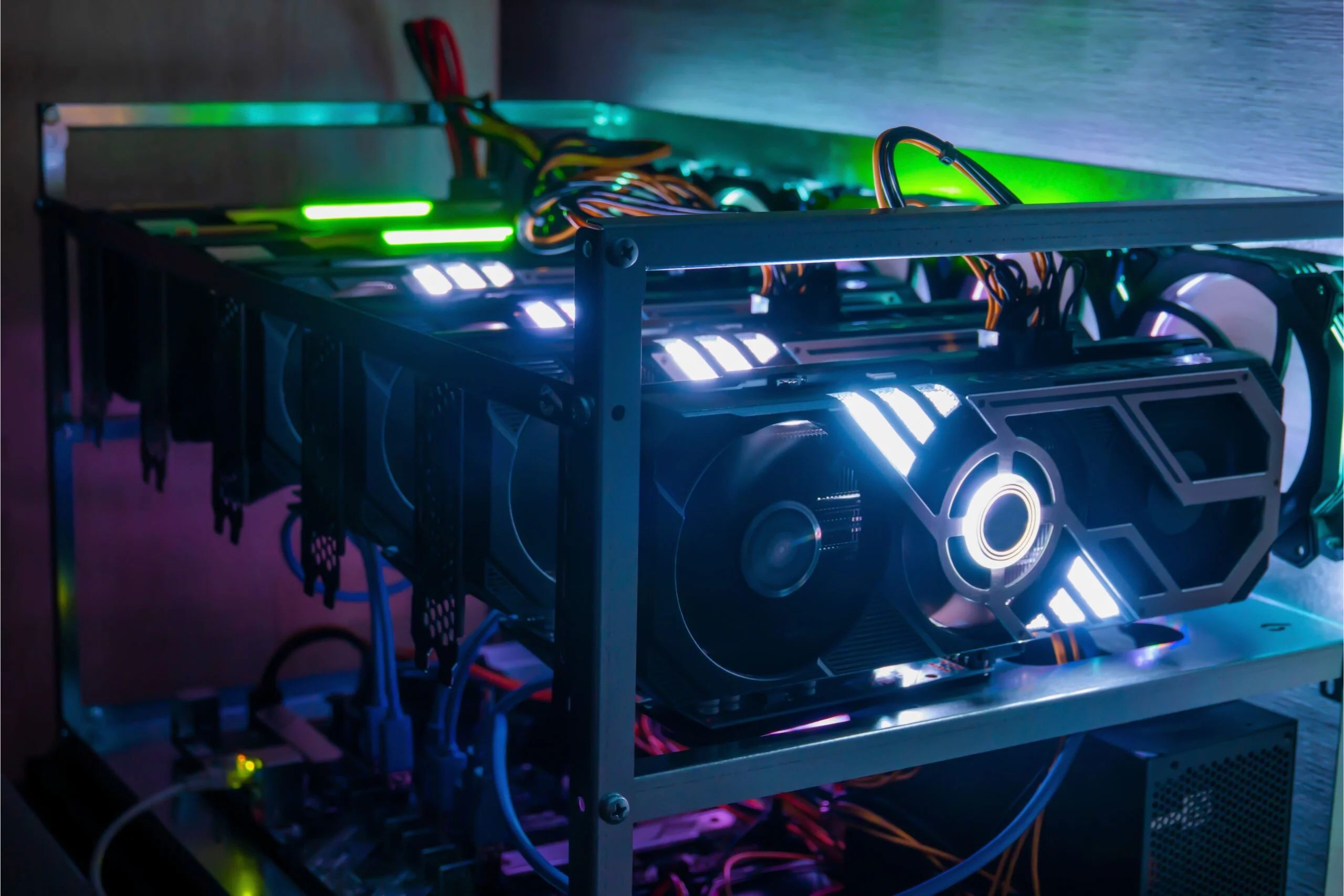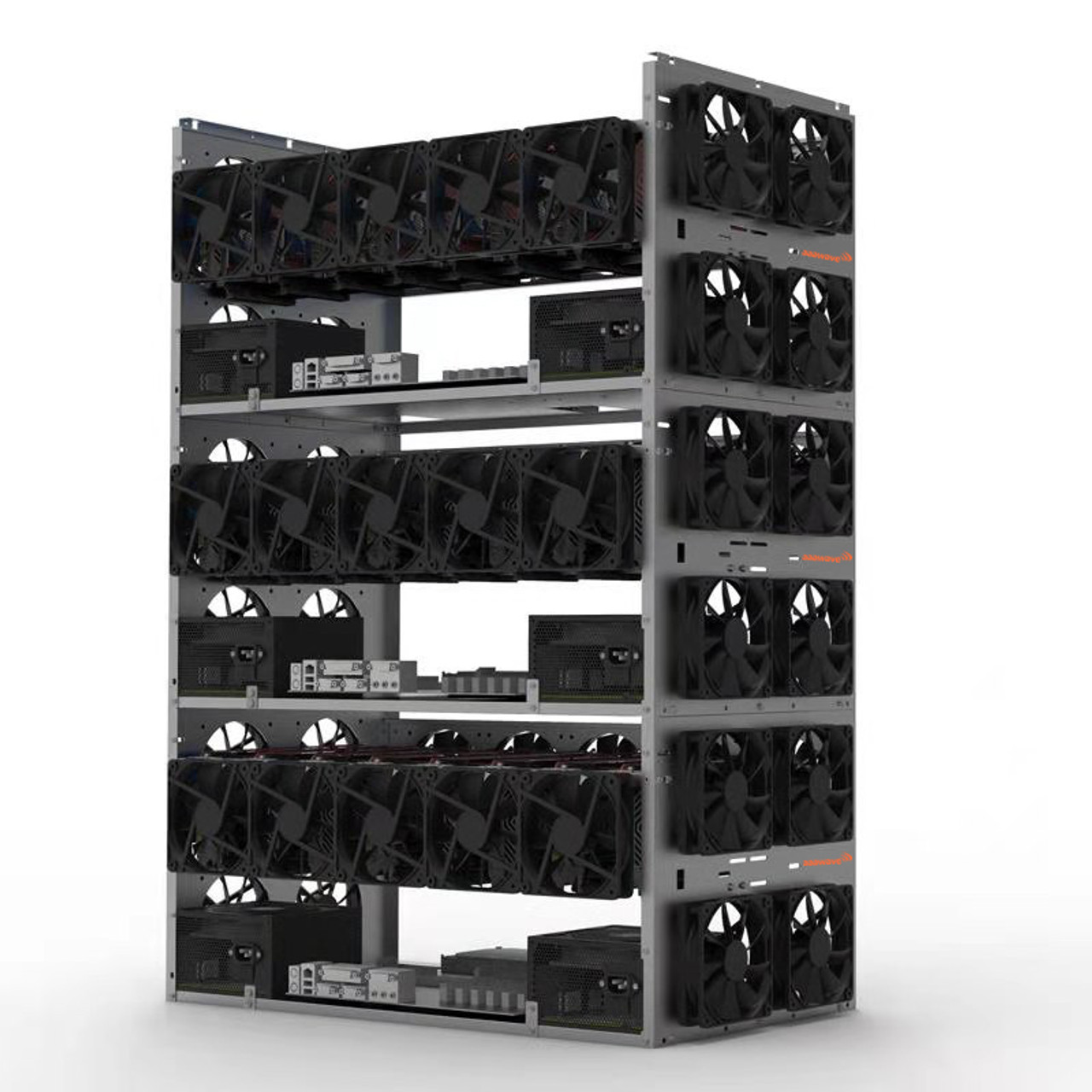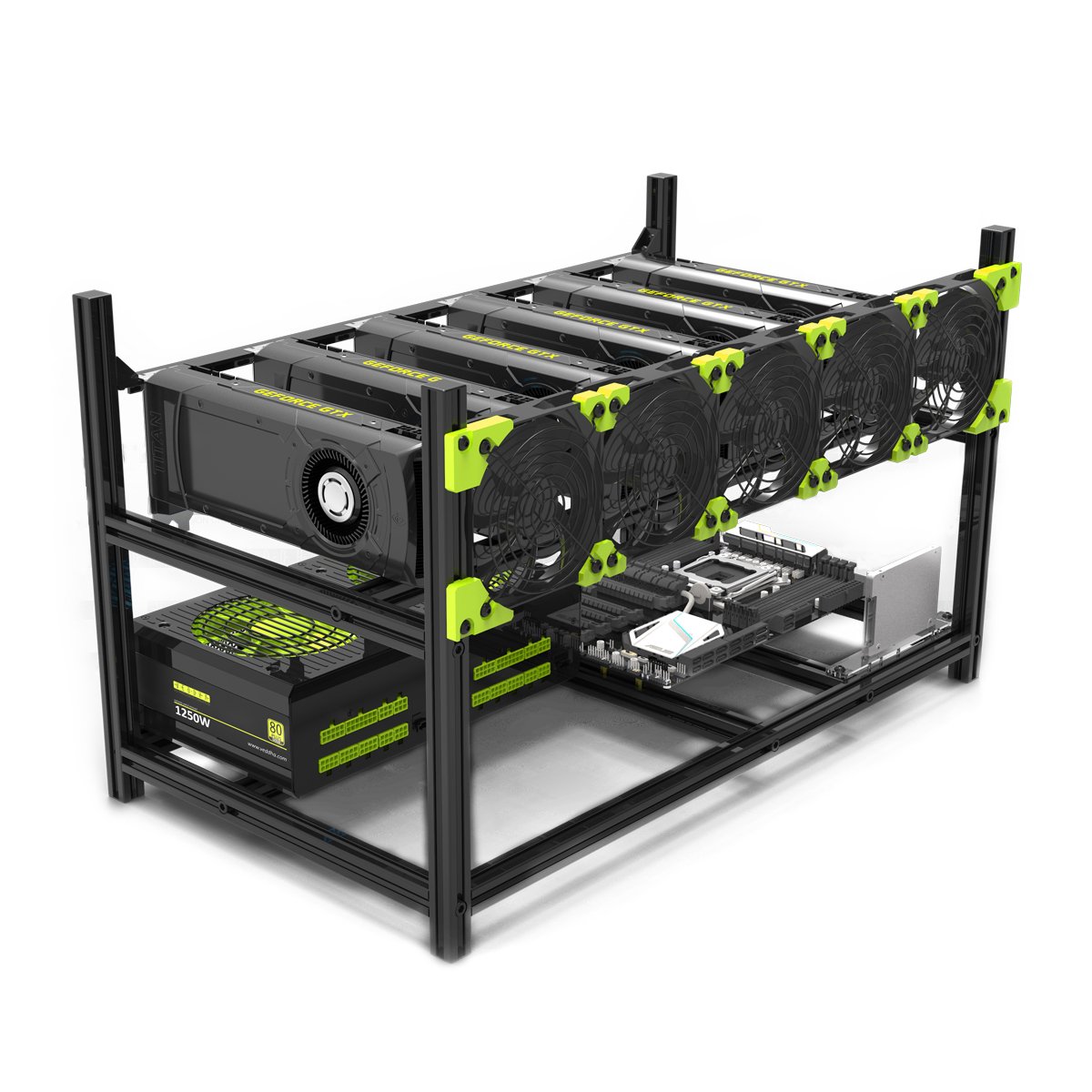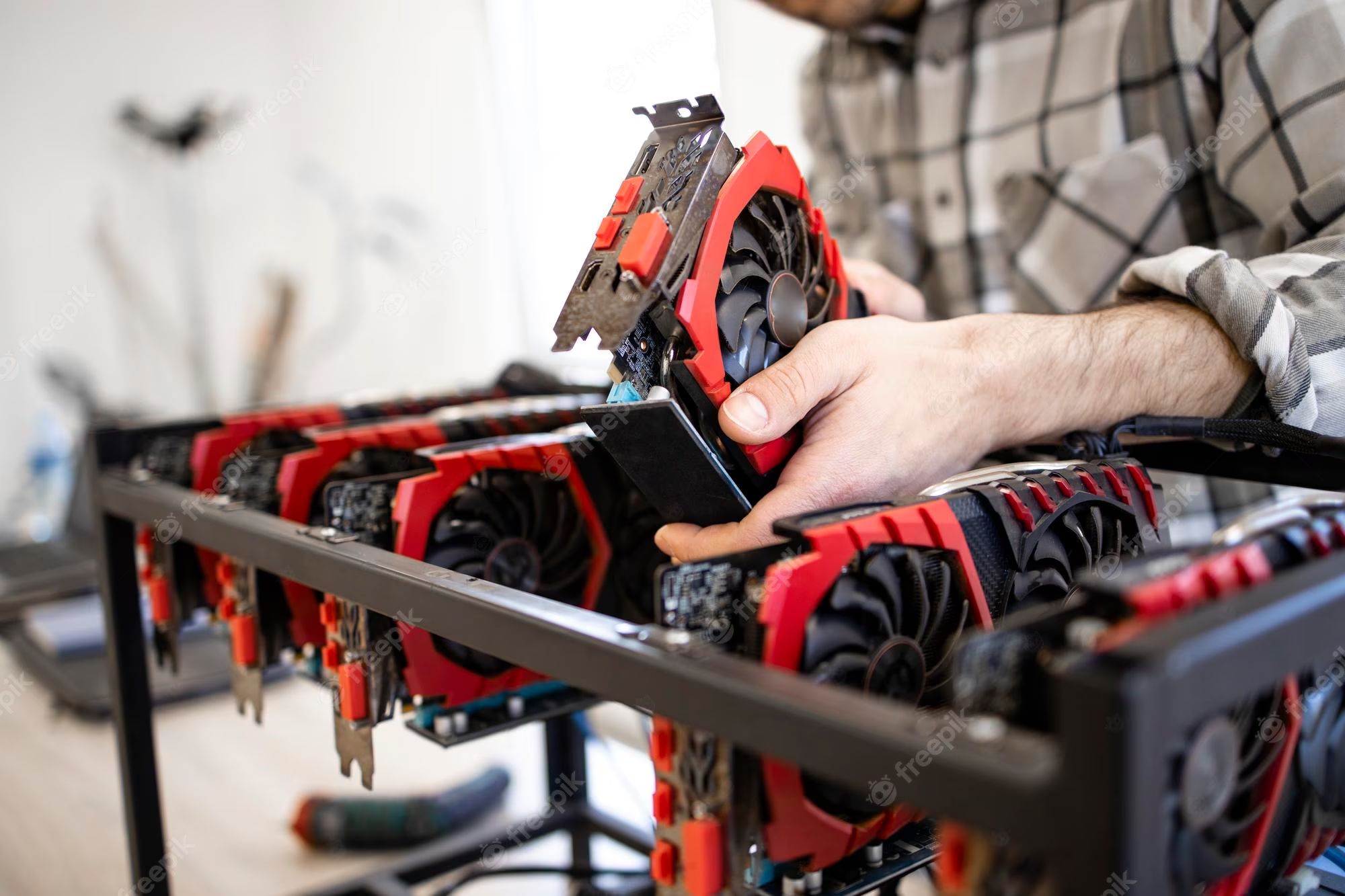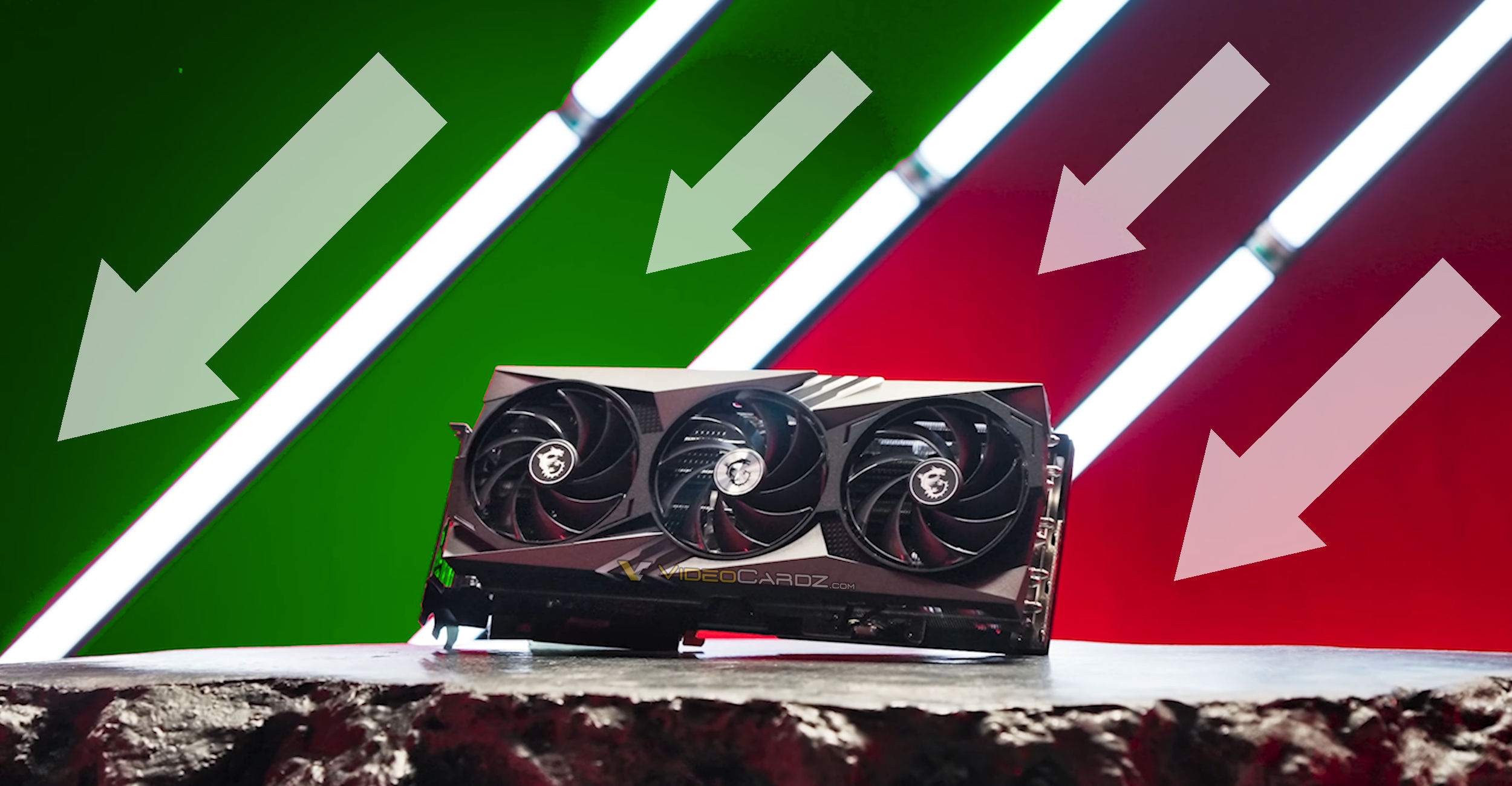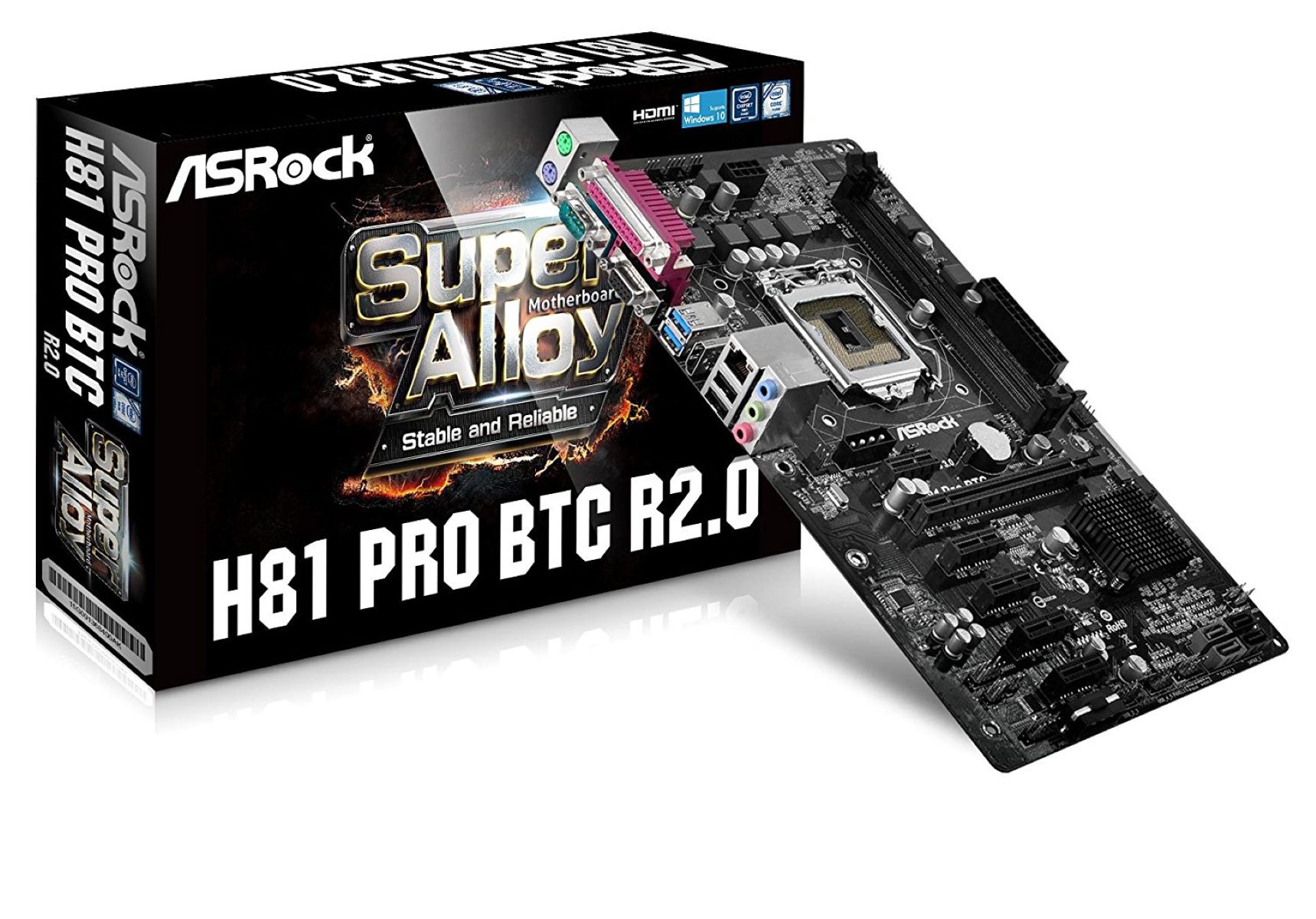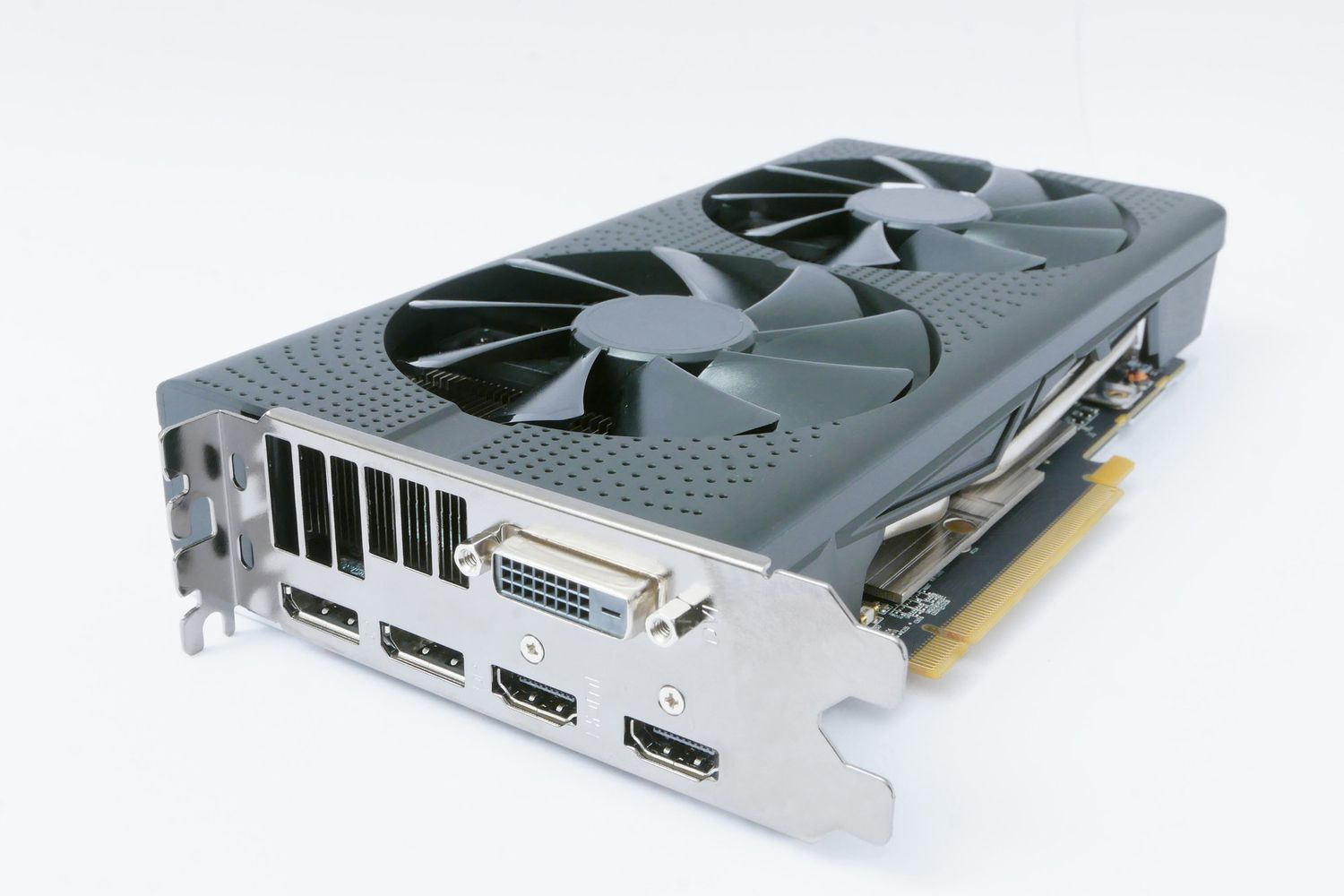What Is Mining GPU?
Mining GPU, or Graphics Processing Unit, refers to the use of graphics cards specifically designed for cryptocurrency mining. Cryptocurrency mining involves solving complex mathematical problems to validate and verify transactions on a blockchain network. As these calculations require substantial computational power, mining GPUs are optimized to perform these operations more efficiently than traditional CPUs.
Traditionally, GPUs have been used for rendering graphics in gaming and other graphics-intensive applications. However, their parallel processing capabilities make them well-suited for mining cryptocurrencies such as Bitcoin, Ethereum, and others.
When mining cryptocurrencies, a mining GPU is responsible for performing millions of mathematical calculations per second. These calculations, known as hash functions, involve finding a specific value that satisfies certain criteria. The miner who successfully finds the correct solution first is rewarded with a certain amount of cryptocurrency.
Mining GPUs are designed with high-performance cooling systems to prevent overheating during intense mining operations. They are also equipped with dedicated memory and more processing cores, enabling them to handle the computationally demanding tasks required for mining.
Furthermore, mining GPUs are typically powered by advanced technologies such as NVIDIA’s CUDA or AMD’s OpenCL. These technologies optimize the GPU’s performance, allowing it to carry out mining tasks faster and more efficiently.
It is worth noting that the effectiveness of mining GPUs can vary depending on the specific cryptocurrency being mined. Different cryptocurrencies use different mining algorithms, and some algorithms may favor specific types of GPUs over others.
Overall, mining GPUs have revolutionized the cryptocurrency mining industry by improving mining efficiency and reducing the time and energy required to mine cryptocurrencies.
How Does Mining GPU Work?
Mining GPU works by utilizing the powerful processing capabilities of graphics cards to solve complex mathematical problems. These problems are integral to the process of mining cryptocurrencies and verifying transactions on blockchain networks.
When a transaction is made on a cryptocurrency network, it needs to be verified and added to the blockchain. This verification process involves solving mathematical algorithms that require significant computational power.
Unlike traditional CPUs, which are designed for general-purpose computing, mining GPUs are optimized for parallel processing. This means they can handle multiple calculations simultaneously, resulting in faster mining speeds.
At the heart of mining GPU’s functionality is its ability to perform hash functions. Hash functions are mathematical algorithms that turn input data into a fixed-size string of characters. The goal of mining is to find a hash that meets specific criteria set by the cryptocurrency protocol.
The mining GPU retrieves a block of transactions from the network and starts hashing the data using its computational power. The GPU performs these calculations repeatedly, adjusting specific parameters, such as the nonce value, to generate different hash values.
Miners compete against each other to find the correct hash value that satisfies the predetermined criteria. Once a miner finds a valid hash, they announce it to the network, and the block of transactions is added to the blockchain. The successful miner is rewarded with cryptocurrency as an incentive for their computational effort.
In addition to the powerful processing capabilities, mining GPUs also require significant cooling to prevent overheating during intense mining operations. They usually come with built-in cooling systems, such as fans or liquid cooling, to maintain optimal temperatures.
Mining GPUs are also known for their energy efficiency compared to traditional CPUs. Their parallel architecture allows them to process multiple calculations simultaneously, resulting in a higher hash rate per unit of energy consumed.
It is worth noting that the profitability of mining GPUs depends on various factors, such as the cost of electricity, the price of the mined cryptocurrency, and the mining difficulty. As the mining difficulty increases, more computational power is required to solve the mathematical problems, making it harder to mine the cryptocurrency.
Overall, mining GPUs play a crucial role in the mining process by providing the computational power required to solve complex algorithms and validate transactions on blockchain networks.
The Benefits of Using Mining GPUs
Using mining GPUs to mine cryptocurrencies offers several advantages over traditional mining methods. Here are some of the key benefits:
1. Increased Mining Efficiency: Mining GPUs are specifically designed to handle the complex calculations required for cryptocurrency mining. Their parallel processing capabilities and dedicated memory make them much more efficient than traditional CPUs, resulting in faster mining speeds and higher hash rates.
2. Higher Hash Rates: Hash rate refers to the number of calculations a mining device can perform per second. Mining GPUs can achieve significantly higher hash rates compared to CPUs, making them more effective at solving complex mathematical problems and increasing the chances of finding the correct hash value.
3. Energy Efficiency: Compared to traditional CPUs, mining GPUs are generally more energy-efficient. Their parallel architecture allows them to perform multiple calculations simultaneously, resulting in a higher hash rate per unit of energy consumed. This can lead to cost savings on electricity bills for miners.
4. Wider Range of Cryptocurrencies: Mining GPUs are versatile and can be used to mine various cryptocurrencies beyond Bitcoin. Different cryptocurrencies use different mining algorithms, and mining GPUs can adapt to these algorithms, allowing miners to explore different mining opportunities and potentially diversify their portfolios.
5. Potential for Higher Profits: Due to their increased mining efficiency and higher hash rates, mining GPUs can potentially generate higher profits for miners. Faster mining speeds mean more opportunities to mine blocks and receive rewards, increasing the chances of earning cryptocurrency.
6. Flexible Configuration: Mining GPUs offer flexibility in terms of configuration and scalability. Miners can configure multiple GPUs in a mining rig to work together, further enhancing their mining power. Additionally, miners can upgrade their GPUs or add more GPUs to their setup as technology evolves, allowing them to stay competitive in the mining market.
7. Community and Resources: Mining with GPUs has a thriving community of miners, developers, and enthusiasts. This community provides valuable resources, support, and knowledge sharing, which can greatly assist newcomers in navigating the intricacies of mining and staying up to date with the latest trends and advancements.
Overall, using mining GPUs offers a range of benefits, including increased mining efficiency, higher hash rates, energy efficiency, flexibility, and potential profitability. These advantages have made mining GPUs a popular choice for cryptocurrency miners worldwide.
Popular Mining GPU Brands
When it comes to mining cryptocurrencies, there are several popular GPU brands that miners often turn to for their mining needs. These brands offer powerful and efficient GPUs specifically designed for mining. Here are some of the leading mining GPU brands:
1. NVIDIA: NVIDIA is a well-known brand in the gaming and computer graphics industry, and they also offer a range of GPUs highly regarded for cryptocurrency mining. Their GPUs, such as the NVIDIA GeForce RTX series, are known for their high hash rates and excellent power efficiency. NVIDIA GPUs are often favored by miners for their strong performance and compatibility with various mining software.
2. AMD: AMD is another prominent player in the GPU market with a strong presence in mining. Their Radeon RX series GPUs are widely used by miners due to their high mining hashrates, affordability, and energy efficiency. AMD GPUs are known for their ability to handle mining algorithms that require large amounts of memory, making them an attractive choice for certain cryptocurrencies.
3. ASICMiner: While NVIDIA and AMD are known for their general-purpose GPUs, ASICMiner focuses specifically on designing and manufacturing Application-Specific Integrated Circuit (ASIC) miners. ASIC miners are highly specialized mining devices dedicated to mining a specific cryptocurrency, such as Bitcoin. They offer exceptionally high hash rates and energy efficiency, making them popular among Bitcoin miners.
4. EVGA: EVGA is a well-regarded brand known for its high-quality GPUs and excellent customer support. Their GPUs, such as the EVGA GeForce RTX series, are popular among miners for their exceptional performance and overclocking capabilities. EVGA provides a reliable and efficient solution for miners looking for top-tier GPUs.
5. Sapphire: Sapphire is a reputable brand that offers a range of AMD GPUs specifically optimized for mining. Their Sapphire Pulse and Nitro series GPUs are widely used by mining enthusiasts for their efficiency, performance, and durability. Sapphire GPUs are known for their excellent cooling systems and stable performance, which are essential for extended mining operations.
It is important to note that the popularity of mining GPU brands can vary depending on the specific requirements of miners and the cryptocurrency being mined. Factors such as hash rates, power consumption, cost, and availability all play a role in the preference for a particular brand.
Before choosing a mining GPU brand, it is recommended to research and compare the specifications, performance, and reviews of different models to find the one that best suits your mining requirements and budget.
Ultimately, the choice of mining GPU brand depends on the specific needs and preferences of the miner, as well as the unique characteristics of the cryptocurrency being mined.
Factors to Consider When Choosing a Mining GPU
Choosing the right mining GPU is crucial for maximizing mining efficiency and potential profitability. When selecting a mining GPU, there are several factors that miners should consider:
1. Hash Rate: The hash rate of a GPU indicates its mining power and the speed at which it can solve mathematical calculations. A higher hash rate means faster mining speeds and increased chances of finding blocks and earning rewards. Miners should look for GPUs with high hash rates to optimize their mining operations.
2. Power Consumption: Energy consumption is a significant cost factor in mining operations. Miners should consider the power efficiency of GPUs to minimize electricity expenses. GPUs with lower power consumption can lead to cost savings and higher profitability in the long run.
3. Price: The cost of the mining GPU is an important consideration for miners, especially for those on a budget. It is essential to find a balance between performance and cost-effectiveness. Comparing prices across different brands and models can help miners find GPUs that offer a good combination of performance and affordability.
4. Memory: The memory capacity of a GPU plays a role in mining various cryptocurrencies. Some mining algorithms require GPUs with high memory capacities to perform efficiently. Miners should consider the memory requirements of the cryptocurrencies they plan to mine and choose GPUs accordingly.
5. Compatibility: It is important to ensure that the chosen mining GPU is compatible with the mining software and operating system being used. Compatibility issues can lead to inefficient mining or even incompatibility altogether. Miners should check the GPU manufacturer’s specifications and recommendations to ensure compatibility.
6. Cooling and Noise: Mining GPUs operate under heavy workloads and generate heat. Effective cooling systems are essential to prevent overheating and maintain optimal performance. Miners should consider GPUs with robust cooling solutions that can handle extended mining sessions. Additionally, noise levels can be a concern, especially for miners operating in residential areas. GPUs with quieter cooling systems may be preferable in such cases.
7. Reliability and Support: Choosing a reputable brand known for producing reliable GPUs is important to ensure long-term stability and minimize the risk of hardware failures. Additionally, good customer support from the GPU manufacturer can be crucial for timely assistance in case of any issues or inquiries.
It is also worth considering factors such as warranty periods, availability of aftermarket modifications, and the overall reputation of the GPU brand within the mining community.
Ultimately, miners should prioritize their specific mining requirements, budget, and the characteristics of the cryptocurrencies they plan to mine when choosing a mining GPU. Conducting thorough research and comparing the specifications and performance of different GPUs can help miners make an informed decision that aligns with their mining goals.
Tips for Setting Up and Using Mining GPUs
Setting up and using mining GPUs effectively is essential for maximizing mining efficiency and profitability. Here are some tips to help miners get started:
1. Choose the Right Mining Software: Selecting the appropriate mining software is crucial to ensure compatibility with your mining GPU and the cryptocurrency you plan to mine. Popular mining software options include CGMiner, BFGMiner, and Claymore’s Miner. Research different mining software options and choose one that best meets your needs.
2. Optimize GPU Settings: Tweaking the settings of your mining GPU can help achieve optimal performance. This includes adjusting clock speeds, power limits, and fan speeds. Experiment with different settings to find the right balance between performance, power consumption, and temperature. However, be cautious with overclocking, as it may void warranties and potentially damage the GPU if not done properly.
3. Maintain a Stable Power Supply: Mining operations require a consistent and stable power supply. Ensure that your mining rig is connected to a reliable power source and consider using surge protectors or uninterruptible power supplies (UPS) to safeguard against power fluctuations and outages. A stable power supply is crucial for preventing mining interruptions and potential data loss.
4. Implement Effective Cooling: Mining GPUs generate substantial heat when operating at full capacity. Proper cooling is essential to maintain optimal performance and extend the lifespan of your GPU. Ensure that your mining rig has adequate airflow, consider using additional fans or liquid cooling, and regularly clean dust buildup to prevent overheating.
5. Monitor Performance and Temperature: It is important to monitor the performance and temperature of your mining GPUs regularly. Use monitoring software, such as MSI Afterburner or GPU-Z, to track hash rates, temperature, and fan speeds. Maintaining optimal temperature ranges and preventing overheating can significantly improve mining efficiency and protect your hardware.
6. Stay Informed and Update Software: Keep up-to-date with the latest mining news, developments, and software updates. Mining communities and forums provide valuable information and insights from experienced miners. Stay informed about potential optimizations, security updates, and new mining algorithms to stay competitive and maximize profits.
7. Consider Pool Mining: Joining a mining pool can increase the chances of earning consistent rewards. Pool mining allows miners to combine their computational power with others to mine collectively and share rewards proportionally. Research and choose a reputable mining pool with a fair reward distribution system to optimize your mining returns.
8. Manage Your Electricity Costs: Mining can consume significant amounts of electricity, impacting your profitability. Research and compare electricity rates in your area and consider mining during off-peak hours when rates may be lower. Optimizing your mining rig’s power efficiency and monitoring electricity usage can help manage costs and increase profitability.
9. Backup and Secure Your Wallet: If you are mining cryptocurrencies that require a wallet, regularly backup your wallet files and store them securely. Implement strong password protection and consider using additional security measures like multi-factor authentication to safeguard your digital assets.
10. Stay Flexible and Adapt: The cryptocurrency mining landscape can change rapidly. Stay adaptable and be prepared to adjust your mining strategies as the market evolves. Monitor mining difficulty, the price of mined cryptocurrencies, and technological advancements to ensure your mining efforts remain profitable.
By following these tips, miners can optimize their mining GPU setup, improve efficiency, and increase their potential profitability. Remember to stay informed, keep an eye on mining developments, and continually fine-tune your mining rig to stay ahead in the dynamic world of cryptocurrency mining.
The Future of Mining GPUs
The future of mining GPUs holds both exciting possibilities and challenges. Here are some key aspects to consider:
1. Advancements in GPU Technology: GPU manufacturers, such as NVIDIA and AMD, continue to push the boundaries of technology, introducing faster and more energy-efficient GPUs. As the demand for mining GPUs remains high, manufacturers are likely to focus on developing GPUs optimized for mining, offering improved performance and power efficiency.
2. Increased Mining Difficulty: As more miners join the cryptocurrency mining ecosystem, mining difficulty levels rise. This means that more computational power is required to solve the mathematical puzzles and mine new blocks. Miners will need to upgrade their mining GPUs or explore alternative mining methods, such as ASIC miners, to stay competitive.
3. Shift to Proof-of-Stake (PoS): Some cryptocurrencies are transitioning from the energy-intensive Proof-of-Work (PoW) mining algorithm to the more environmentally friendly Proof-of-Stake (PoS) consensus mechanism. PoS relies on staking cryptocurrency holdings instead of solving computational puzzles. This shift may reduce the demand for mining GPUs, as PoS-based cryptocurrencies require less computational power.
4. Mining Algorithim Diversity: The mining landscape is likely to evolve with the emergence of new cryptocurrencies and innovative mining algorithms. GPUs will need to adapt to different mining algorithm requirements to remain relevant. Miners may need to diversify their mining portfolio and adjust their mining strategies accordingly.
5. Integration of AI and Blockchain: The fusion of artificial intelligence (AI) and blockchain technology has the potential to revolutionize various industries. Mining GPUs, with their powerful computational capabilities, can play a role in the implementation of AI on blockchain networks. AI algorithms may benefit from the parallel processing power of GPUs, creating opportunities for new applications and use cases.
6. Environmental Concerns: The energy consumption associated with mining cryptocurrencies has raised environmental concerns. As the ecological impact continues to be a focus, the development of more energy-efficient mining GPUs will be crucial. Additionally, innovative solutions, such as utilizing renewable energy sources for mining, may gain traction in the future.
7. Regulatory Landscape: The regulatory environment surrounding cryptocurrencies and mining is still evolving in many jurisdictions. As governments and regulatory bodies establish frameworks to govern digital currencies, miners may need to navigate new regulations related to energy consumption, taxation, and licensing. Adapting to these changing regulatory landscapes will be important for the future of mining GPUs.
Overall, the future of mining GPUs will be shaped by technological advancements, shifts in mining algorithms, environmental considerations, and regulatory developments. Miners will need to stay informed, adapt to emerging trends, and invest in the latest GPU technology to remain competitive in the evolving cryptocurrency mining industry.
Conclusion
Mining GPUs have revolutionized the world of cryptocurrency mining, providing miners with efficient and powerful tools to validate transactions on blockchain networks. These specialized graphics cards offer high computational power, optimized performance, and energy efficiency, making them a popular choice for miners worldwide.
Throughout this article, we have explored the concept of mining GPUs and how they work. We have discussed the benefits of using mining GPUs, including increased mining efficiency, higher hash rates, flexible configuration options, and potential profitability.
Furthermore, we have examined popular mining GPU brands such as NVIDIA, AMD, ASICMiner, EVGA, and Sapphire, highlighting their unique features and strengths in the mining industry.
When selecting a mining GPU, several factors such as hash rate, power consumption, price, memory, compatibility, cooling, and reliability should be considered. By carefully evaluating these factors, miners can make informed decisions and optimize their mining operations.
We have also provided tips for setting up and using mining GPUs effectively, emphasizing the importance of choosing the right mining software, optimizing GPU settings, maintaining a stable power supply, implementing effective cooling, and staying informed about mining developments.
Looking ahead, the future of mining GPUs is promising yet dynamic. Advancements in GPU technology will continue to enhance mining efficiency, while shifts in mining algorithms, the integration of AI and blockchain, and evolving regulatory landscapes will shape the mining industry’s landscape.
In conclusion, mining GPUs play a significant role in the world of cryptocurrency mining, offering miners the computational power needed to validate transactions and earn rewards. By staying informed, adapting to new developments, and investing in the right mining GPU, miners can optimize their mining operations and participate effectively in the ever-evolving world of cryptocurrencies.









